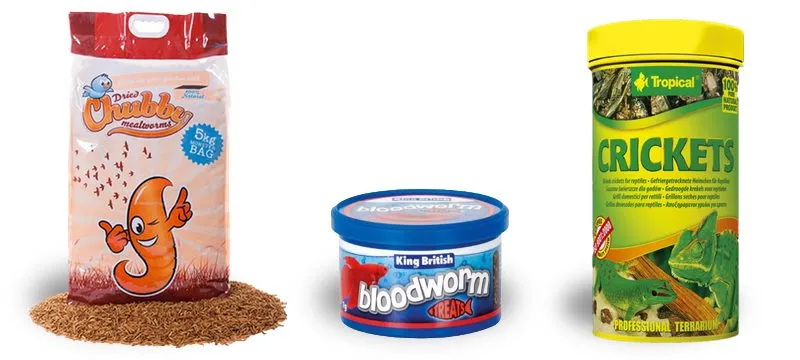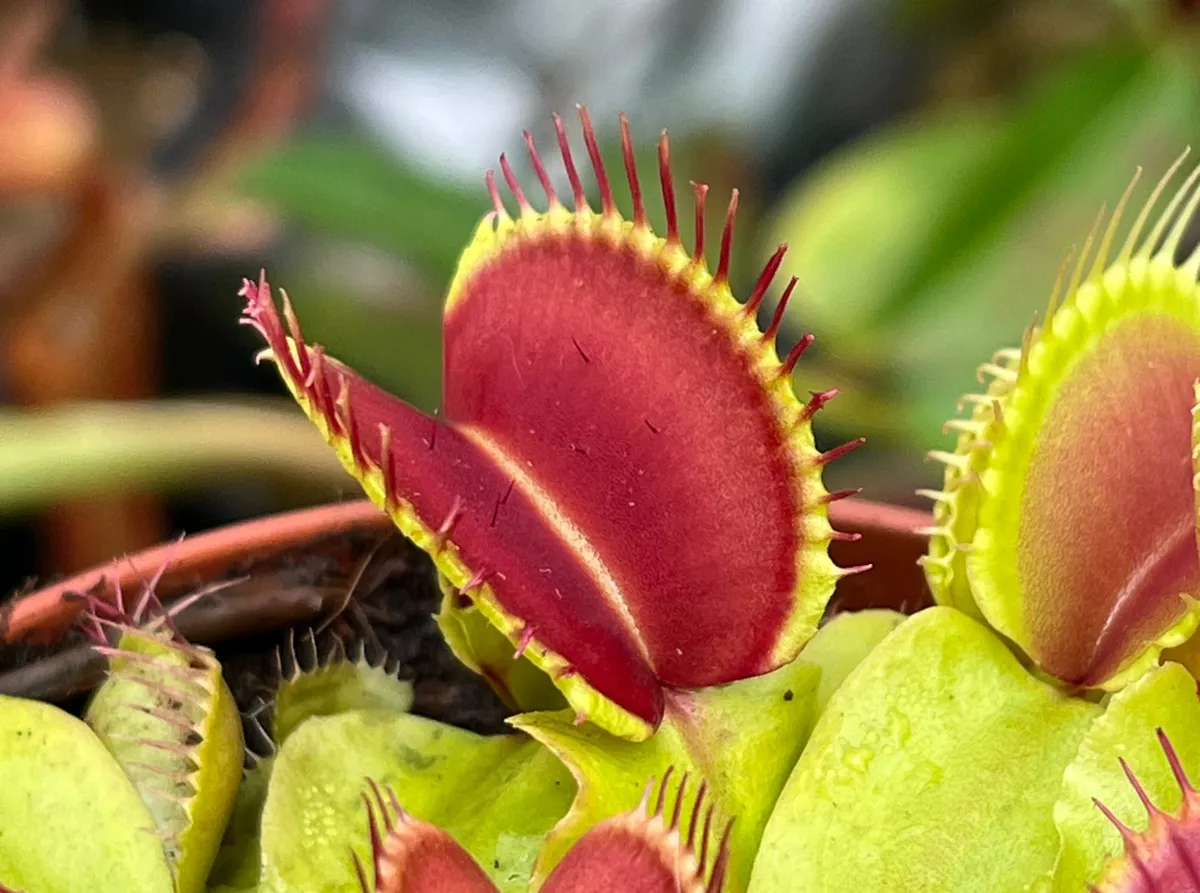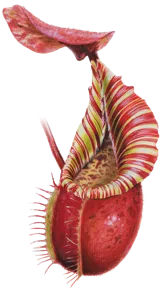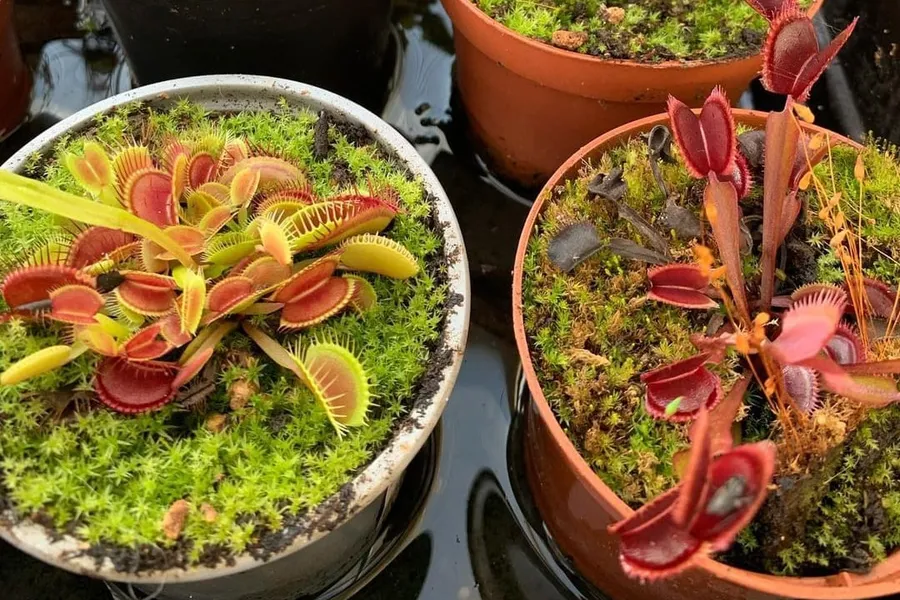I’ll give you the short answer first: not really, no.
The real answer, though, is slightly more complicated. It depends on whether you’re willing to invest the time necessary to make your flytrap ‘think’ it’s caught real prey, so the dead bug gets properly digested. If you are sufficiently dedicated to your plant’s wellbeing, there are ways to make dead bugs work as a meal. But - there might be other (better) ways to make your flytrap happy. Let’s get started!
Why are dead bugs not suitable for Venus flytraps?
If you’ve dropped a dead bug into your flytrap and dutifully poked the trigger hairs to make it snap shut, you’ve probably been disappointed to find the trap reopening - the meal rejected - mere hours later. This is because Venus flytraps have some clever adaptations to avoid wasting energy.
In my article explaining how Venus Flytraps work, I explore their extraordinary ability to count. Touch one of the trigger hairs lining the trap’s interior, and nothing happens. It takes two touches in quick succession for the trap to spring shut. This is to prevent non-prey items - dead leaves, raindrops, and so on - from triggering the trap, which would use up valuable energy for no reward.
Crucially, the plant’s sophisticated counting mechanism continues even after the trap has first closed. The teeth lining the edges of the trap (called ‘cilia’) form a sort of cage, allowing any tiny insects to escape through the gaps. Once again, the plant is determined to make sure that the effort of digestion is not wasted on small or inedible items. Only sufficiently large insects caught in the trap - their struggles further stimulating the trigger hairs - will prompt the digestion process to continue.
So, if you want your flytrap to digest a dead bug, you need to stimulate the trigger hairs after the trap is shut. But how?
How can I feed my flytrap with a dead bug?
First things first, make sure you’re feeding your flytrap suitable food. You need a dead bug that’s no larger than 1/3 the size of the trap. Too big and you risk the trap being unable to fully seal, which will cause it to rot. Mealworms or crickets can work well, if you don’t have a dead housefly to hand.

Once you have your prey ready, it’s time to feed:
-
Using a pair of tweezers, place the dead bug into the waiting trap. If it doesn’t shut immediately, touch the trigger hairs on the inner surface of the leaf again to activate the trap.
-
Using a cocktail stick or straightened paperclip to reach inside the trap, gently touch several of the trigger hairs to further stimulate the trap. You want it to think a live bug is frantically scurrying around inside!
-
Continue to touch the hairs every 30 seconds or so until the trap is fully sealed. You’ll know it’s worked when the gaps between the ‘teeth’ get smaller, so you can no longer reach inside with your stick. This means digestion is starting.
Well done! You’ve invested a lot of effort in making sure you have a happy, well-fed plant.
What else can I feed my Venus flytrap?
Live bugs! Perhaps unsurprisingly, these tend to work best. If you grow your Venus Flytrap indoors but live somewhere with a suitable climate (in other words, if it’s warm and sunny outside!), you can simply pop your Venus Flytrap out on a windowsill or porch for a day. You might be surprised how often they manage to catch something for themselves.

Another option is to buy live insects - such as crickets - from pet shops, intended as food for reptiles. These can be stunned by putting them in the fridge for 10-15 minutes, making them easier to place into your flytrap. They’ll soon warm up and begin struggling, providing the all-important movement which stimulates digestion.
I’ve never tried this method myself - it always seemed like a lot of effort and perhaps a little bit cruel. Putting your plant outside on a sunny day is far easier and gives it the added benefit of some extra sunshine.
My Venus flytrap still isn’t digesting its food… 😞
If your flytrap is still struggling to digest dead bugs, your plant might be unhealthy or weak. If you bought it from a garden centre or hardware store, it’s highly likely that your plant is exhausted or stressed from suboptimal growing conditions while at the shop. Thin, spindly leaves or traps turning black or yellow are telltale signs of an unhappy Venus flytrap.
In the UK, I can highly recommend Hampshire Carnivorous Plants as the best place to buy healthy Venus flytraps. Established and run by Matthew Soper, this nursery also sells compost, seeds, and carnivorous plant collections. Quick delivery is available throughout the UK.
If you’re in the US, I can highly recommend California Carnivores. They have a wide range of healthy Venus Flytraps available for delivery throughout the US, as well as ideal companion plants. You can also get 10% off your order with the code tomscarnivores.
Do I need to feed my Venus flytrap?
Probably not! Whenever people ask me this question, I always say that you should take care of all your flytrap’s other needs first, before worrying about whether it’s catching enough flies.
- Is your plant getting sufficient sunlight? (flytraps like it very bright!)
- Are you providing enough water of suitable purity? (they like it very wet, preferably rainwater or distilled)
- Have you respected its winter dormancy requirements? (flytraps require a cold rest period)
You can read about how to provide suitable conditions for your Venus flytrap right here on my website.
Thanks for reading! And happy feeding.




